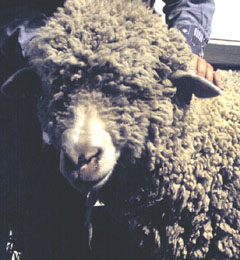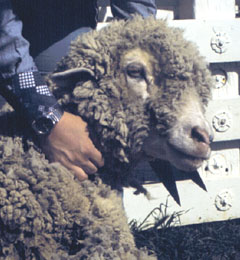Before |
After |
|
Eyeing Out |
Shearing - Before or after Lambing?
Deciding when the ewe flock should be sheared is a major management decision and one that should not be taken lightly. Shearing pregnant ewes 2-4 weeks before lambing is a practice that has both advantages and disadvantages. They are listed below:
Advantages:
Disadvantages:
Crutching: If the decision is not to shear ewes before they lamb, crutching is an alternative to consider. Crutching means to shear around the udder, between the hind legs, and around the dock area. If wool covering on the face is extensive, the head, face, eye orbital area, and cheeks should be shorn during the crutching process. Generally, the above processes are often referred to as "tagging" and "eyeing out" the ewe flock.
|
|